Ant Colony Treatment (ACT) offers a revolutionary, eco-friendly approach to ant control by targeting infestations at their core, leveraging ants' complex social behavior. This method uses synthetic pheromones to disrupt colony communication and navigation, ensuring long-term control with minimal environmental impact. Early detection of signs like ant trails and specific behaviors is crucial for success. Preventative measures include regular cleaning, sealing entry points, and using natural deterrents. Eco-friendly methods like baits, traps, and introducing beneficial insects provide targeted solutions without harming non-target species. For severe or hard-to-reach infestations, professional assistance leverages specialized tools and equipment for comprehensive, long-lasting control. Integrated Pest Management (IPM) principles promote sustainable ant management while preserving biodiversity.
Ant Control: Unveiling Effective Solutions for a Pest-Free Environment
Ants, with their intricate social structures and remarkable navigation abilities, can quickly transform from nuisance to serious pest issue. This article delves into the world of ant control, offering a comprehensive guide to understanding and managing these persistent invaders. From unravelling the science behind pheromone-based treatments to providing practical prevention strategies, we explore diverse methods to combat ant infestations effectively. Discover the power of knowledge in the battle against ants, ensuring a peaceful coexistence with these tiny intruders.
# Ant Control: Unveiling the Power of Ant Colony Treatment
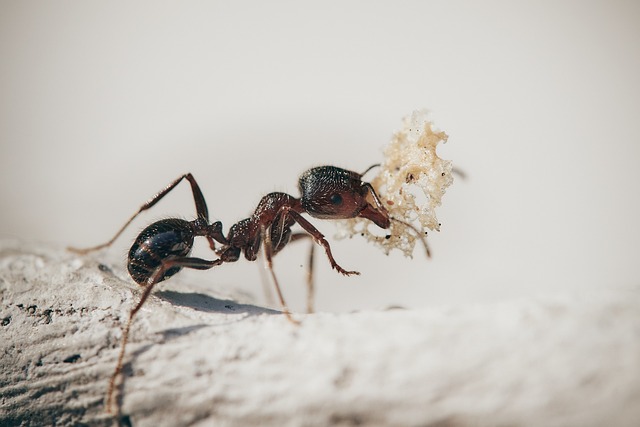
Ant control is a common challenge faced by many homeowners, and traditional methods often involve chemical pesticides that can have adverse effects on both the environment and human health. This is where Ant Colony Treatment (ACT) emerges as a revolutionary solution. ACT is an eco-friendly approach designed to eradicate ant infestations by targeting their complex social structure. By understanding how ants communicate and organize within their colonies, this method disrupts their feeding and nesting patterns, ultimately leading to colony decline.
Unlike conventional methods that merely mask symptoms, ACT gets to the root of the problem. It involves carefully placing specific substances at strategic locations where ants leave trails or enter structures. These substances disrupt the pheromone paths, causing ants to lose their way and stop foraging, which, over time, weakens and eliminates the colony. This natural and safe method ensures minimal impact on non-target species and has proven effective in managing ant populations without resorting to harmful chemicals.
<section id="understanding-ant-behavior–delve-into-the-complex-social-structure-and-navigation-skills-that-make-ants-a-formidable-pest.”>
Understanding Ant Behavior: Delve into the complex social structure and navigation skills that make ants a formidable pest.
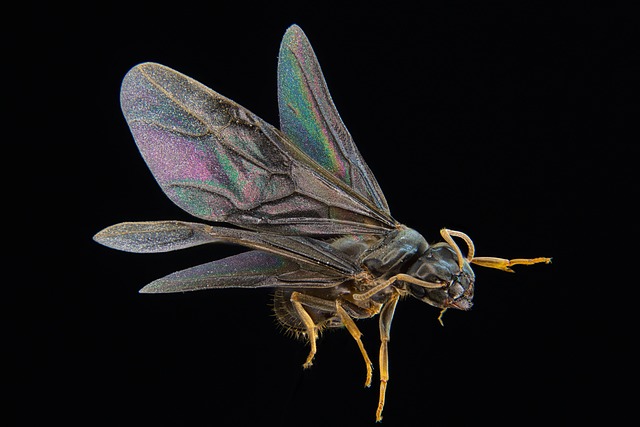
Ants, known for their remarkable organization and efficiency, form complex colonies with intricate social structures. Each ant within the colony has a specific role, from workers that forage for food to soldiers that defend the nest and queens responsible for reproduction. This level of specialization allows them to effectively navigate and exploit resources in their environment, making ant control challenging. Their advanced navigation skills, including using pheromones and visual cues, enable them to travel long distances while returning precisely to their nests.
Understanding these behaviors is crucial in implementing effective ant control measures. Professional pest control services often leverage this knowledge to employ tailored strategies. By disrupting communication networks, blocking access to food sources, or applying targeted treatments, experts can disrupt the colony’s functioning without causing unnecessary harm to the environment or other beneficial insects. This precise approach underscores the importance of professional intervention for successful ant management.
<section id="the-science-behind-ant-colony-treatment–explore-the-principles-and-benefits-of-using-pheromones-and-targeted-interventions-to-disrupt-ant-colonies.”>
The Science Behind Ant Colony Treatment: Explore the principles and benefits of using pheromones and targeted interventions to disrupt ant colonies.

The Ant Colony Treatment (ACT) is a scientific approach to ant control that leverages the complex social behavior of ants. At its core, ACT relies on pheromones—chemicals used by ants to communicate with each other. By strategically placing synthetic pheromone trails, we can disrupt the colony’s communication network, making it difficult for ants to find food sources or navigate their nest. This targeted intervention not only reduces ant activity but also prevents their repopulation as it eliminates the queen and her ability to lay eggs.
Unlike traditional pest control methods that focus on killing individual ants, ACT addresses the colony as a whole. By disrupting the colony’s structure and communication, this method offers several benefits, including long-term ant control, minimal environmental impact, and reduced risk to non-target species. Moreover, it is particularly effective for hard-to-reach areas where ants have established colonies, making it a preferred solution for both residential and commercial properties seeking sustainable ant control measures.
<section id="identifying-ant-infestations–learn-key-signs-and-symptoms-of-an-ant-colony,-from-trails-to-distinct-species-behaviors.”>
Identifying Ant Infestations: Learn key signs and symptoms of an ant colony, from trails to distinct species behaviors.
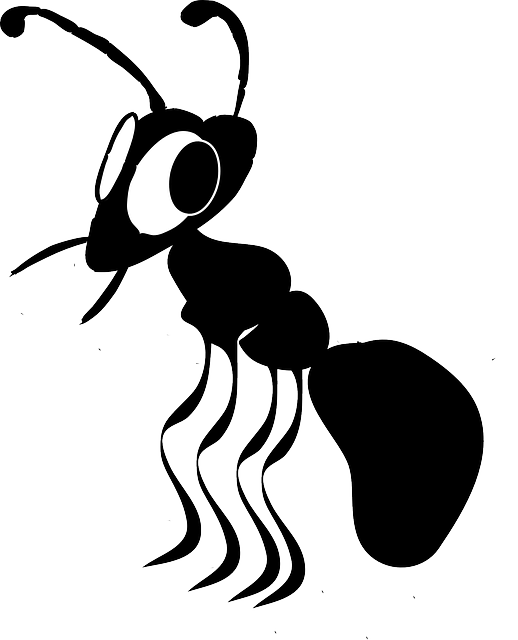
Identifying an ant infestation early is key to effective ant control. Keep an eye out for distinct signs such as ant trails, which often lead from food sources back to their colonies. These trails can be followed to locate the main nest, a crucial step in targeted treatment. Additionally, observe the behavior of ants; some species exhibit unique patterns, like the swarming behavior seen in carpenter ants or the distinct lines formed by fire ants during their march.
Understanding these clues allows for proactive ant control measures. If an infestation is suspected, professional assistance should be sought to ensure comprehensive removal. The right expertise can pinpoint hidden colonies and employ tailored treatments, preventing future invasions. Regular inspections are also beneficial, as they enable early detection of any ant activity, thus minimizing potential damage and ensuring a peaceful living environment.
<section id="prevention-strategies–discover-practical-tips-for-maintaining-a-barrier-against-ants,-covering-cleanliness,-sealing-entry-points,-and-using-natural-deterrents.”>
Prevention Strategies: Discover practical tips for maintaining a barrier against ants, covering cleanliness, sealing entry points, and using natural deterrents.

Maintaining a clean and sealed environment is key to preventing ant infestations. Regularly cleaning surfaces, especially in kitchens and dining areas, can eliminate food remnants that attract ants. Focus on wiping down countertops, sweeping floors, and promptly cleaning up spills to minimize their interest in your space. Additionally, sealing entry points such as cracks, gaps around doors and windows, or any visible openings in walls is vital. Using caulk or weatherstripping can create a physical barrier, making it harder for ants to find their way inside.
Natural deterrents offer an eco-friendly alternative to chemical ant control methods. Keeping your space well-ventilated and using scents that ants dislike, like lemon, peppermint, or cinnamon, can act as effective repellents. Planting certain herbs like basil, mint, or lavender near entry points may also help keep ants at bay. Additionally, maintaining a balanced ecosystem by avoiding overwatering and providing adequate drainage can reduce ant attraction, as they are often drawn to moist environments.
<section id="non-chemical-approaches–examine-alternative-methods-such-as-baits,-traps,-and-beneficial-insects-that-can-be-effective-in-ant-control.”>
Non-Chemical Approaches: Examine alternative methods such as baits, traps, and beneficial insects that can be effective in ant control.

Non-chemical approaches offer a more eco-friendly alternative to traditional chemical insecticides for ant control. One such method is using baits, which involve attracting ants with a substance that contains a slow-acting toxin. Once the ants consume the bait, they carry the poison back to their colony, eventually eliminating it. This technique is particularly effective because it targets only the ants and does not harm other insects or the environment.
Another non-chemical strategy involves employing traps that lure ants using pheromones or other attractants. These traps can be placed in areas where ant activity is high, effectively capturing and reducing their numbers. Additionally, introducing beneficial insects like certain species of wasps or spiders can help control ant populations naturally. These predators feed on ants, disrupting the colony’s structure and reducing their overall number without resorting to chemical treatments.
<section id="when-to-call-the-professionals–recognize-situations-where-professional-pest-control-services-are-necessary-for-severe-or-hard-to-reach-infestations.”>
When to Call the Professionals: Recognize situations where professional pest control services are necessary for severe or hard-to-reach infestations.
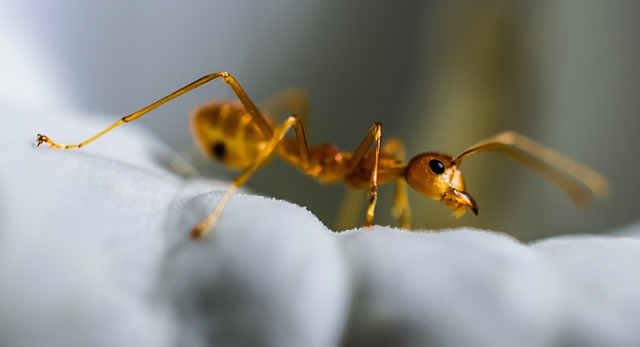
When dealing with ant infestations, knowing when to call in the professionals is crucial for effective ant control. While DIY methods can be successful for minor issues, severe or hard-to-reach infestations often require the expertise and resources of a pest control service. Signs that it’s time to seek professional assistance include: large numbers of ants consistently entering your home or building despite treatment; ants nesting in hard-to-reach areas like walls, ceilings, or beneath flooring; and an infestation that seems to be spreading quickly despite your best efforts.
Professional ant control services offer specialized equipment and treatments designed to tackle these challenging situations. They have access to a broader range of chemicals and techniques, including advanced tools for locating and eliminating colonies hidden within structures. Additionally, pest control experts can provide valuable advice on preventing future infestations by identifying entry points and offering tailored solutions based on the specific species affecting your property. This proactive approach ensures a more durable solution for ant control compared to temporary fixes.
<section id="eco-friendly-considerations–discuss-environmentally-conscious-practices-in-ant-control,-including-the-use-of-biodegradable-products-and-minimizing-chemical-exposure.”>
Eco-Friendly Considerations: Discuss environmentally conscious practices in ant control, including the use of biodegradable products and minimizing chemical exposure.
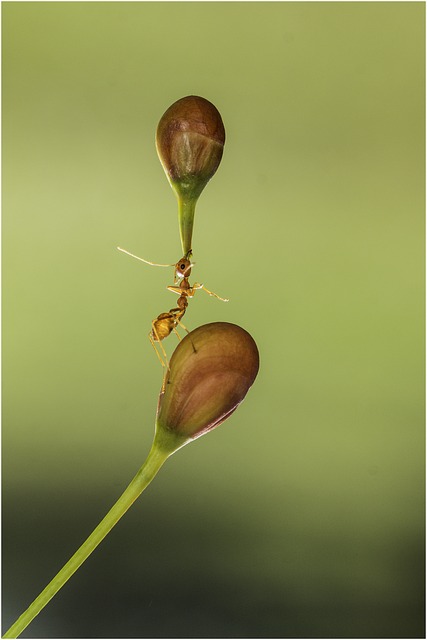
In the realm of ant control, there’s a growing emphasis on eco-friendly considerations to ensure the safety of both humans and the environment. One key approach is the use of biodegradable products, which minimize the ecological impact often associated with traditional chemical treatments. These natural alternatives, derived from plants and other organic sources, effectively combat ant infestations without leaving behind harmful residues. By adopting such practices, we can preserve biodiversity and protect delicate ecosystems, especially in areas prone to high ant activity.
Minimizing chemical exposure is another critical aspect of environmentally conscious ant control. This involves selecting products with lower toxicity levels and implementing strategies that reduce the need for frequent applications. Integrated Pest Management (IPM) principles, which focus on integrated solutions including prevention, monitoring, and targeted treatments, play a pivotal role here. By combining these methods, we can effectively manage ant populations while preserving the balance of nature, making it a more sustainable and healthier option for both residential and commercial settings.
